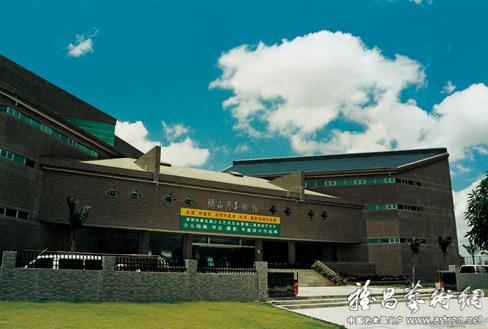Why are Chinese art museums getting the cold shoulder?
 |
|
Shenzhen Guan Shanyue Art Museum [arton.net] |
More and more Chinese local governments are waking up to the fact that a dash of culture can improve a city's image. Lavish art museums are springing up like mushrooms all round the country. But they are attracting very few visitors. The very purpose of an art museum is to promote public enjoyment and welfare, so how do we explain public indifference? Dozens of curators met in the Shenzhen Guan Shanyue Art Museum to discuss this issue and the future of Chinese museums.
Museums are getting the cold shoulder.
The missions of an art museum are to enrich cultural life and cultivating people's artistic taste. Art museums attract visitors by their design, location and, of course, their collections. But despite the vast sums spent on organizing exhibitions passers by seldom bother to walk in. It is a stubborn fact that is causing curators to sigh with despair.
Shenzhen Guan Shanyue Art Museum at the foot of beautiful Lianhua Mountain is a case in point. Museum Research fellow Chen Lusheng said it had so few visitors that, as an old Chinese idiom goes; you could "catch sparrows on the doorstep".
"We have become used to seeing an empty exhibition hall just days after the opening ceremony," said Hua Jianguo, curator of Henan Art Museum. His museum is in the center of Zhengzhou, capital of Henan Province. Most of the visitors are parents with children looking for family entertainment. Very few visitors could be described as art enthusiasts
Faced with low visitor numbers and empty exhibition halls, some museums resort to renting space to private companies who want to stage commercial functions. Why are art museums so unpopular in China?
Some curators said people should realize that Chinese art museums are at an early stage of development. They have little in the way of existing collections and have to borrow art from other museums to stage exhibitions.
Elegant but empty museums are turning into embarrassing white elephants in many cities. Chen Lusheng said managers are constantly thinking up schemes to attract visitors. One way is to let the public in free of charge but that seems to have limited success. Ticket prices don't seem to be the main factor in keeping people away. But in many places there is no tradition of going to art museums and many museums are doing little to promote their exhibitions.
The lack of promotion is often due to lack of money. Curator Li Jiemin said the main task of most museum managers is fund-raising. Museums that can barely cover their day-to-day running costs have no money to fund a promotions budget. In Shenzhen there are billboards advertising concerts and plays everywhere, but very few museum ads.
Another major problem is the confusion over the role of art museums. The curator's consensus was that an art museum should conduct research, collect and exhibit art works, educates and serves the people. Everyone thought they should belong to the people not just a few experts. But the reality is that many people don't understand or value art and are not interested in learning. If they visit once they will never return. So many museums are focusing on exhibitions and neglecting their educational role. Furthermore they are increasingly choosing "relevant" and unchallenging exhibitions that reflect modern life and are easy for people to understand.
How to create art museums that appeal to the public
The curators gave suggestions on how to drag art museums out of current predicament.
Feng Bin of Sichuan Fine Arts Academy Museum said swapping exhibitions was one way to use limited budgets effectively. "Exhibitions normally last about a mouth, but cost a million yuan and a year to prepare. Exchanging collections with other museums costs only a few tens of thousands of yuan in transport costs. It's well worth it."
You Guanglin of Fujian Art Museum said emphasizing regional art, closely related with people's daily lives, is vital to building museums with Chinese characteristics. Museums should collect art works that are relevant and attract more people. But at the same time, they should pay attention to education and popularization of the arts. Li Xu of Shanghai Zhang Jiang High Tech Park Art Museum is putting his faith in public art. His idea is to create museums in public spaces and let ordinary people freely interact with and touch the art work. Li has applied his idea in Shanghai. He invited artists to create 40 pieces of public art including functional items such as pavilions, bridges and bus stops. They will be on permanent exhibition in Zhang Jiang Park.
 0 Comments
0 Comments






